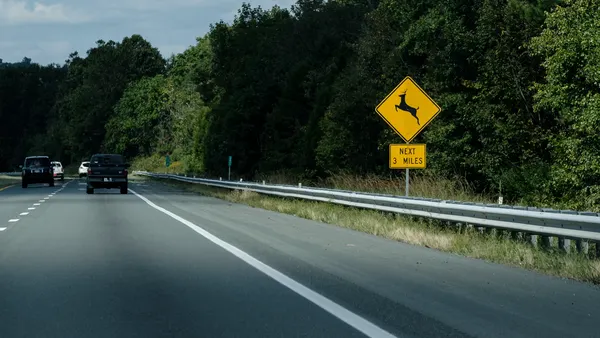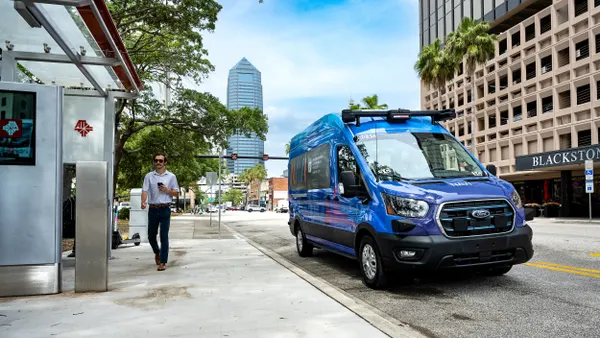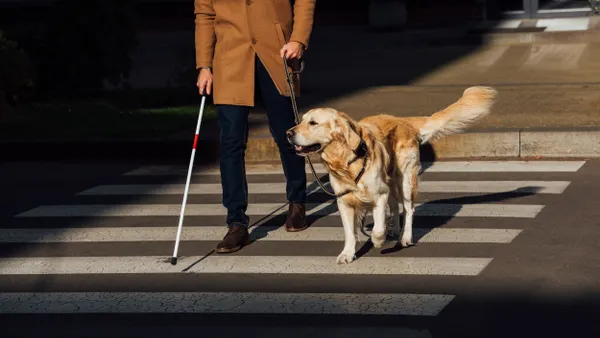Dive Brief:
- Researchers from the University of Michigan have released a paper outlining how one malicious car could trick smart traffic control into thinking an intersection is full. This would force the control algorithm to behave differently, causing congestion or blocking of the intersection.
- The researchers examined technology being piloted by the U.S. Department of Transportation (USDOT) called I-SIG, a vehicle-to-infrastructure (V2I) system that allows cars to share data with intersections, traffic lights and other infrastructure. They found that there is a "vulnerability at the signal control algorithm level," meaning that one connected vehicle can send multiple messages to the system and trick it into thinking cars are still coming, preventing any turns from the left lane.
- Traffic from those left-turn lanes then spills into the other lanes, causing what the report describes as "massive traffic jams," which negates the benefits of smart intersections.
Dive Insight:
This I-SIG system is already used in Cheyenne, WY; New York City; Palo Alto, CA; Tampa, FL and Temple, AZ, according to Bleeping Computer. On its website, USDOT emphasizes the successes of the pilot program so far.
Bleeping Computer further notes that it is "unclear" how someone might take advantage of the issue discovered by the Michigan researchers, as to have a real effect on a city’s congestion it would require cars at a slew of smart intersections sending them these signals. That could then affect local businesses, and also create issues for public transportation and school buses that have to navigate the difficult urban environment.
It is suggested that city leaders be more concerned about malicious people creating a virus that could spread from car to car and block intersections nationwide. Either way, the team from Michigan suggest using a "robust algorithm design" to combat this, and also software and sensors that can detect data spoofing and shut it down.
With the growth of “smart” intersections and similar work across cities like Dallas and Kansas City, MO, it is imperative to keep infrastructure safe from cyberattacks. Connected transportation could help ease congestion and is still in the developmental stages, but any risk of it being manipulated by threat actors must be removed.











